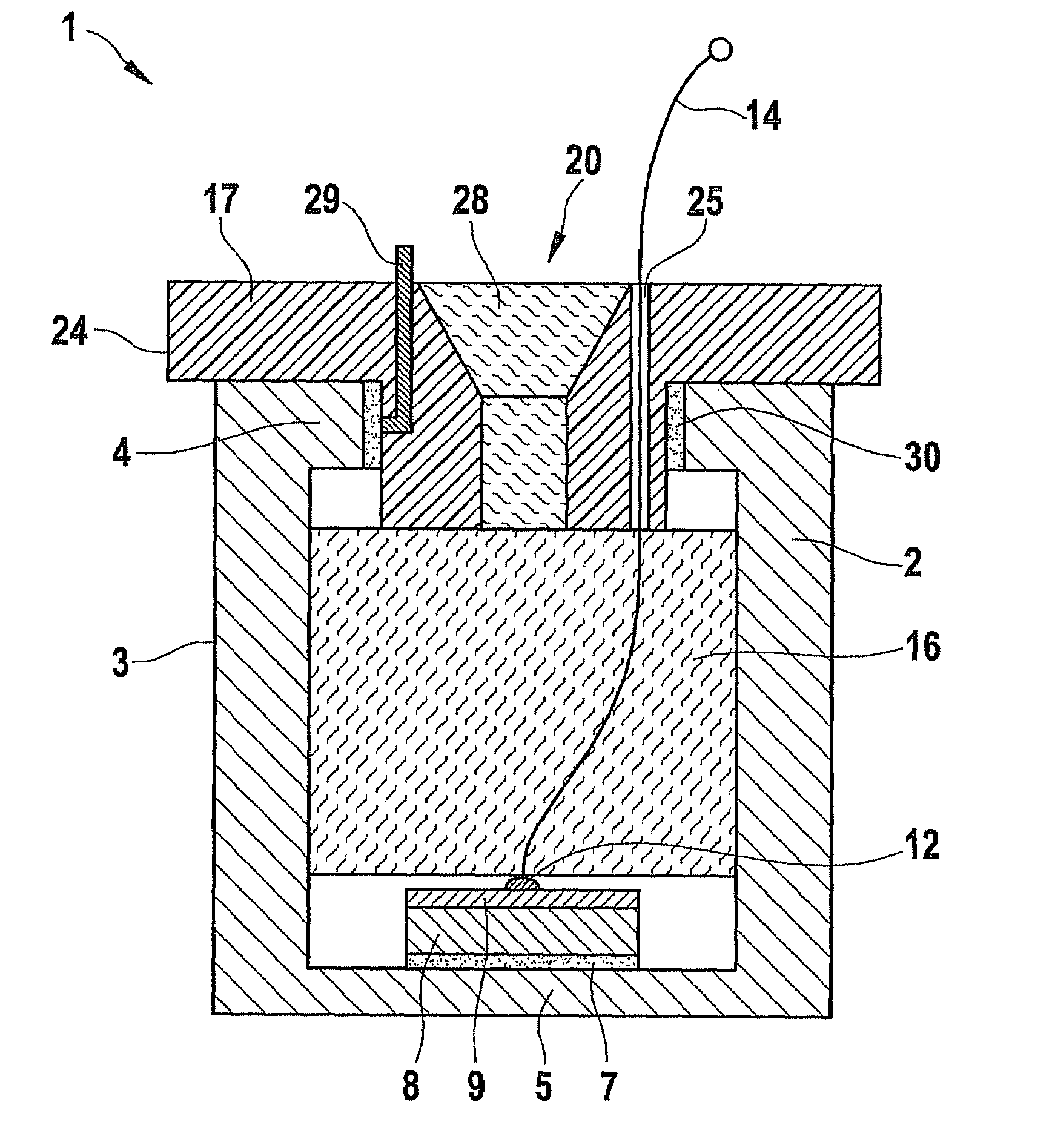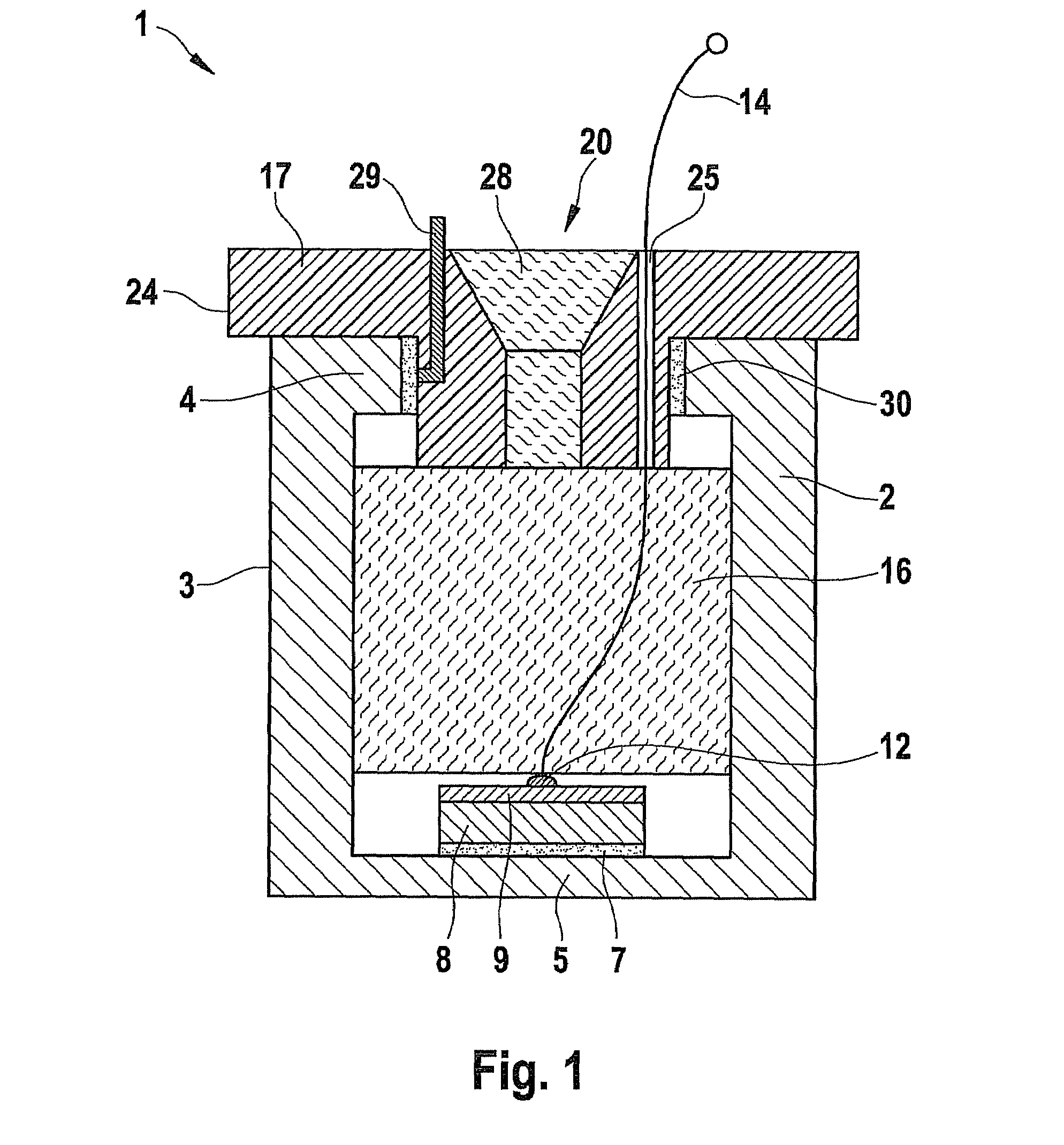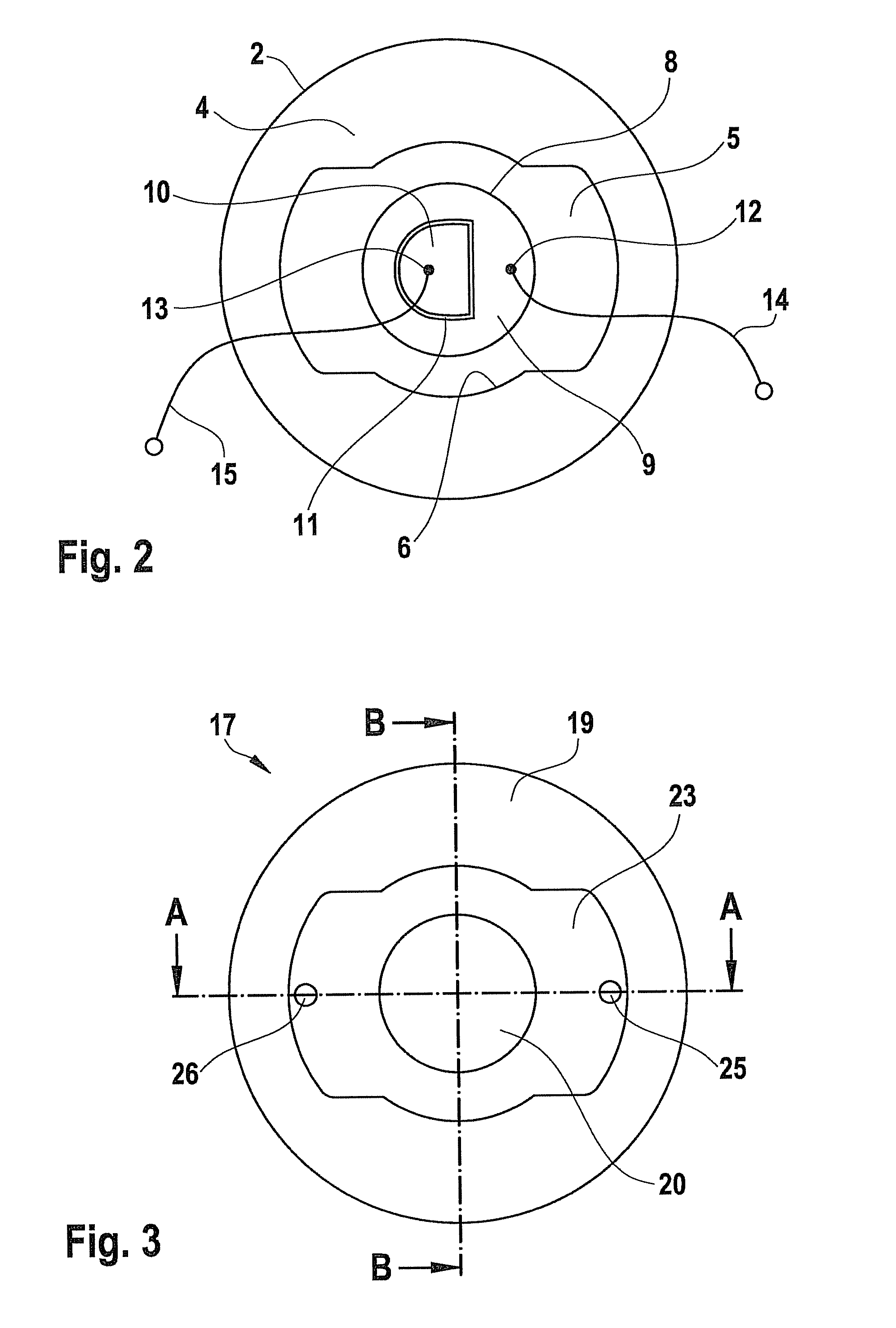Ultrasonic sensor having a cover including a damping element
a technology of ultrasonic sensor and damping element, which is applied in the direction of acceleration measurement using interia force, generator/motor, instruments, etc., can solve the problems of difficult production implementation, adversely affecting the critical functional requirement of proximity measurement capability, and requiring exact parameters for gluing and foaming
- Summary
- Abstract
- Description
- Claims
- Application Information
AI Technical Summary
Benefits of technology
Problems solved by technology
Method used
Image
Examples
Embodiment Construction
[0047]Identical or similar components having identical or similar functions are provided with identical reference symbols in the figures.
[0048]A sensor 1 according to the present invention is shown in FIG. 1 as an exemplary embodiment in a sectional representation. A housing 2 has a bottom 5 as a diaphragm.
[0049]Furthermore, at its upper side, housing 2 has an edge 4 having an opening with a contour 6 (see FIG. 2), into which a cover 17 is inserted. Housing 2 is preferably an extruded aluminum part.
[0050]In the interior of housing 2, a transducer element 8 is fastened to the bottom of housing 2 by means of a connecting element 7, in this case a glue. only one side of transducer element 8 has a first plating 9 of a suitable metal, for example silver. Plating 9 is connected to a first lead 14 via a soldered joint in a first terminal point 12. Transducer elements 8 having a second coating 10 on their underside may also be used, connecting element 7 then being designed in the form of an...
PUM
| Property | Measurement | Unit |
|---|---|---|
| distance | aaaaa | aaaaa |
| frequency | aaaaa | aaaaa |
| frequency | aaaaa | aaaaa |
Abstract
Description
Claims
Application Information
 Login to View More
Login to View More - R&D
- Intellectual Property
- Life Sciences
- Materials
- Tech Scout
- Unparalleled Data Quality
- Higher Quality Content
- 60% Fewer Hallucinations
Browse by: Latest US Patents, China's latest patents, Technical Efficacy Thesaurus, Application Domain, Technology Topic, Popular Technical Reports.
© 2025 PatSnap. All rights reserved.Legal|Privacy policy|Modern Slavery Act Transparency Statement|Sitemap|About US| Contact US: help@patsnap.com



